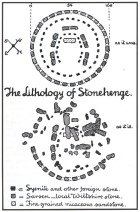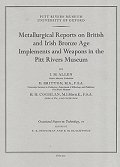<< Our Photo Pages >> Les Grises Pierres - Standing Stones in France in Normandie:Manche (50)
Submitted by theCaptain on Saturday, 16 October 2010 Page Views: 5227
Neolithic and Bronze AgeSite Name: Les Grises PierresCountry: France Département: Normandie:Manche (50) Type: Standing Stones
Nearest Town: Valognes Nearest Village: Montaigu-la-Brisette
Latitude: 49.564800N Longitude: 1.4118W
Condition:
| 5 | Perfect |
| 4 | Almost Perfect |
| 3 | Reasonable but with some damage |
| 2 | Ruined but still recognisable as an ancient site |
| 1 | Pretty much destroyed, possibly visible as crop marks |
| 0 | No data. |
| -1 | Completely destroyed |
| 5 | Superb |
| 4 | Good |
| 3 | Ordinary |
| 2 | Not Good |
| 1 | Awful |
| 0 | No data. |
| 5 | Can be driven to, probably with disabled access |
| 4 | Short walk on a footpath |
| 3 | Requiring a bit more of a walk |
| 2 | A long walk |
| 1 | In the middle of nowhere, a nightmare to find |
| 0 | No data. |
| 5 | co-ordinates taken by GPS or official recorded co-ordinates |
| 4 | co-ordinates scaled from a detailed map |
| 3 | co-ordinates scaled from a bad map |
| 2 | co-ordinates of the nearest village |
| 1 | co-ordinates of the nearest town |
| 0 | no data |
Internal Links:
External Links:
I have visited· I would like to visit
Runemage would like to visit
TheCaptain has visited here
I have found that these stones still exist, although now both fallen and becoming lost and buried underneath the growing vegetation and falling earth from the talus / embanked hedgerows at the edge of the ancient trackway.
The first stone I found, relatively easily as it is close to the modern trackway, is the larger and most southerly of the two. It is about two metres long, up to 1.3 metres wide and of tapered section up to half a metre thick. It consists of a grey puddingstone conglomerate, mostly a smooth consistency one face, much more pebbley the other. It is recorded that it used to stand with its small end into the ground. Legends say that it turns three times on Christmas Eve.
The second stone was much harder to find, as it was almost completely buried, and is about 25 metres northeast from its companion along the trackway under the growth of the uphill side talus / hedgerow. It is slightly smaller than its mate, and again consists of a grey puddingstone conglomerate.
The stones can be found by following an ancient trackway downhill towards the northwest from the hilltop churchyard for a few hundred metres, and then taking the trackway which encircles the hill to the north. This is "La Chasse des Fosses", despite the modern name on maps etc. A hundred metres or so along this trackway the stones can be found in the undergrowth on the uphill side. The modern track is a new version of the old trackway made for modern times, and is outside the ancient hollow trackway on the downhill side. The ancient track can still be followed between the hedges besides this, and indeed does run between the stones.
There are several other smaller bits of puddingstone to be found beside the various trackways, and indeed several pieces strategically placed within the churchyard at the top of the hill.
On the top of the conical shaped hill here, is the old church and various other chapel constructions which are sited within the oval/circular churchyard. The churchyard is entirely enclosed within an embanked oval, consisting of a banked and perhaps ditched construction, with many large stones to be found within the banks. These embankments have growing within them many ancient yew trees.
I have to say that this is a tremendous place. The ancient church and chapels sited atop the hill enclosed in their circular enclosure with ancient yew tree ridden borders atop the banks and ditches give it a wonderful atmosphere. And with some very obviously ancient holloways and tracks around the hillside, the whole place just reeks of history. This place truly has a magic about it.
Note: Glad to report that these stones still exist, although fallen and very overgrown (less so after my recent visit). Site description and pictures now recieved. I cannot yet vouch for their spinning three times on Christmas night, as the fairies story tells.
You may be viewing yesterday's version of this page. To see the most up to date information please register for a free account.




Do not use the above information on other web sites or publications without permission of the contributor.
Click here to see more info for this site
Nearby sites
Click here to view sites on an interactive map of the areaKey: Red: member's photo, Blue: 3rd party photo, Yellow: other image, Green: no photo - please go there and take one, Grey: site destroyed
Download sites to:
KML (Google Earth)
GPX (GPS waypoints)
CSV (Garmin/Navman)
CSV (Excel)
To unlock full downloads you need to sign up as a Contributory Member. Otherwise downloads are limited to 50 sites.
Turn off the page maps and other distractions
Nearby sites listing. In the following links * = Image available
339m SE 126° Montaigu-la-Brisette dolmen Burial Chamber or Dolmen
9.6km SE 126° Menhir de Quinéville Standing Stone (Menhir)
9.6km WNW 299° Menhirs du Mesnil-Auval Standing Stones
11.3km NNW 348° La Longue Pierre (Carneville) Standing Stone (Menhir)
11.4km NNW 334° Maupertus menhir* Modern Stone Circle etc
11.5km NNW 331° Grande et Petite Pierre* Standing Stones
11.6km NW 322° Bretteville Allée Couverte* Passage Grave
11.6km N 351° Divises de Carneville Stone Circle
11.7km WSW 243° Menhir dit Pierre Dressée Standing Stone (Menhir)
12.2km NW 307° Allée Couverte de Tourlaville Passage Grave
12.4km N 2° La Longue Pierre (St-Pierre-Eglise)* Standing Stone (Menhir)
12.8km SW 231° Pierre Dressée (Nègreville) Standing Stone (Menhir)
12.8km WNW 297° Truffert Dolmen Burial Chamber or Dolmen
12.9km N 7° La Haute Pierre (St-Pierre-Eglise)* Standing Stone (Menhir)
13.6km WSW 241° Galerie des Forges Passage Grave
13.6km N 350° La Pierre aux Magniants Standing Stone (Menhir)
13.6km NNW 345° La Longue Pierre Ferrant Standing Stone (Menhir)
14.1km WNW 288° Menhirs de la Glacerie* Standing Stones
14.2km WNW 285° Pierre Butée de Tourlaville Standing Stone (Menhir)
14.2km N 3° Pierre Plantée (Cosqueville)* Standing Stone (Menhir)
14.3km N 2° Le Cul du Diable* Standing Stone (Menhir)
14.4km N 354° Menhir des Casernes Standing Stone (Menhir)
14.7km N 6° Trigalle dolmen* Burial Chamber or Dolmen
14.7km WSW 239° Allée Couverte de Câtillon Passage Grave
14.8km N 352° Fort Joret allée couverte* Passage Grave
View more nearby sites and additional images






 We would like to know more about this location. Please feel free to add a brief description and any relevant information in your own language.
We would like to know more about this location. Please feel free to add a brief description and any relevant information in your own language. Wir möchten mehr über diese Stätte erfahren. Bitte zögern Sie nicht, eine kurze Beschreibung und relevante Informationen in Deutsch hinzuzufügen.
Wir möchten mehr über diese Stätte erfahren. Bitte zögern Sie nicht, eine kurze Beschreibung und relevante Informationen in Deutsch hinzuzufügen. Nous aimerions en savoir encore un peu sur les lieux. S'il vous plaît n'hesitez pas à ajouter une courte description et tous les renseignements pertinents dans votre propre langue.
Nous aimerions en savoir encore un peu sur les lieux. S'il vous plaît n'hesitez pas à ajouter une courte description et tous les renseignements pertinents dans votre propre langue. Quisieramos informarnos un poco más de las lugares. No dude en añadir una breve descripción y otros datos relevantes en su propio idioma.
Quisieramos informarnos un poco más de las lugares. No dude en añadir una breve descripción y otros datos relevantes en su propio idioma.